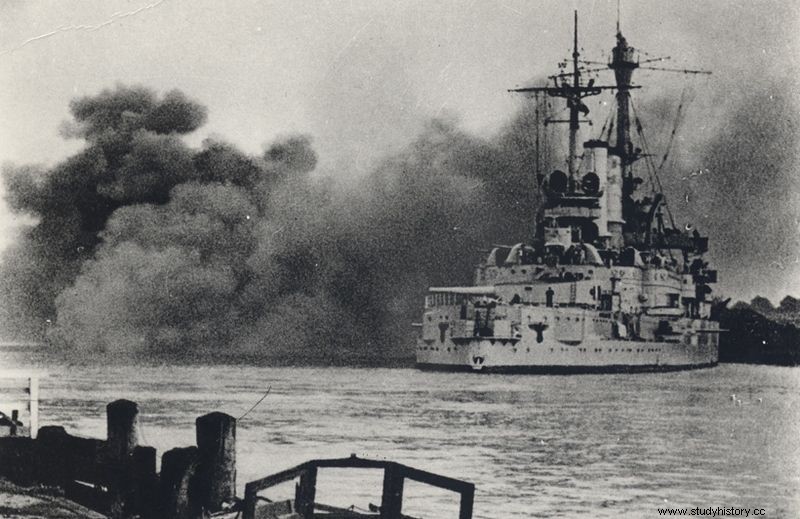Hundreds of articles, dozens of books and even comics. The defense of Westerplatte is one of the most frequently described episodes of September 1939. However, we had to wait over 75 years for someone to finally determine what the actual shelling of the famous facility looked like.
The salvo from the guns of the German ship, fired on September 1, 1939 at 4:48 a.m., became a symbol of the beginning of World War II. It would seem, then, that the shelling of the Military Transit Depot should no longer hide any secrets. Especially since a log of combat operations of a worn-out battleship has been preserved. None of these things.
Until last year, we did not even know the exact number of shells fired by the Germans from the ship's guns. This changed only thanks to the findings of Dr. Jan Szkudliński from the Museum of the Second World War.

"Schleswig-Holstein" shells Westerplatte. The on-board artillery of the old battleship twice (September 1 and 7) targeted the Military Transit Depot (source:public domain).
The Gdańsk historian, while searching the German archives, found an undated report of the first officer of the artillery "Schleswig-Holstein", Captain Guido Zaubzer. As Dr. Szkudliński emphasizes in the "Historical-Military Review", it includes, among others:

The material is based on a text by Jan Szkudliński published in "Przegląd Historyczno-Wojskowy".
so far unpublished data on the use of medium and light artillery ammunition by the German ship when firing at Westerplatte on September 7:5 rounds 280 mm, 116 rounds 150 mm, 197 rounds 88 mm and 2,400 rounds 20 mm.
Until now, we only had information on what it looked like in relation to the firing of the first day of the war. Now we have a complete picture of the situation.
Finally, we can clearly state that during the firing of the Polish facility on September 1 and 7, the Germans used:103 rounds of the caliber of 280 millimeters, 562 of the caliber of 150 millimeters, 563 of the caliber of 88 millimeters and 13,400 of the rounds of the caliber of 20 millimeters. It was just such a fire attack that the defenders of Westerplatte had to face.
The source of the above news is:
Jan Szkudliński, Military Transit Depot at Westerplatte in the light of new German archival materials, "Przegląd Historyczno-Wojskowy" 2015, No. 3, pp. 141-159.
Historical news. What's the matter?
 | The "historical news" column is the latest news from the world of history. We are looking for missed and concealed discoveries of Polish (and not only) scientists. We show that there is always something going on in research on the past. |
 | Our news is short and accessible. On 2-3 thousand signs, we will summarize for you the discoveries that scientists have made on dozens of pages of hermetic works. We only write about what really matters. No boring. |
 | We rely on scientific publications from the last 18 months . In the world of history, news spreads slowly, and academic works reach potential recipients with a long delay. What in other fields ceases to be news after 24 hours in history, it may even be a year later. |
 | When preparing news, we follow the list of the most prestigious historical periodicals. If you are a publisher or author and would like us to reach for a specific publication - please send it to our editorial office. |
